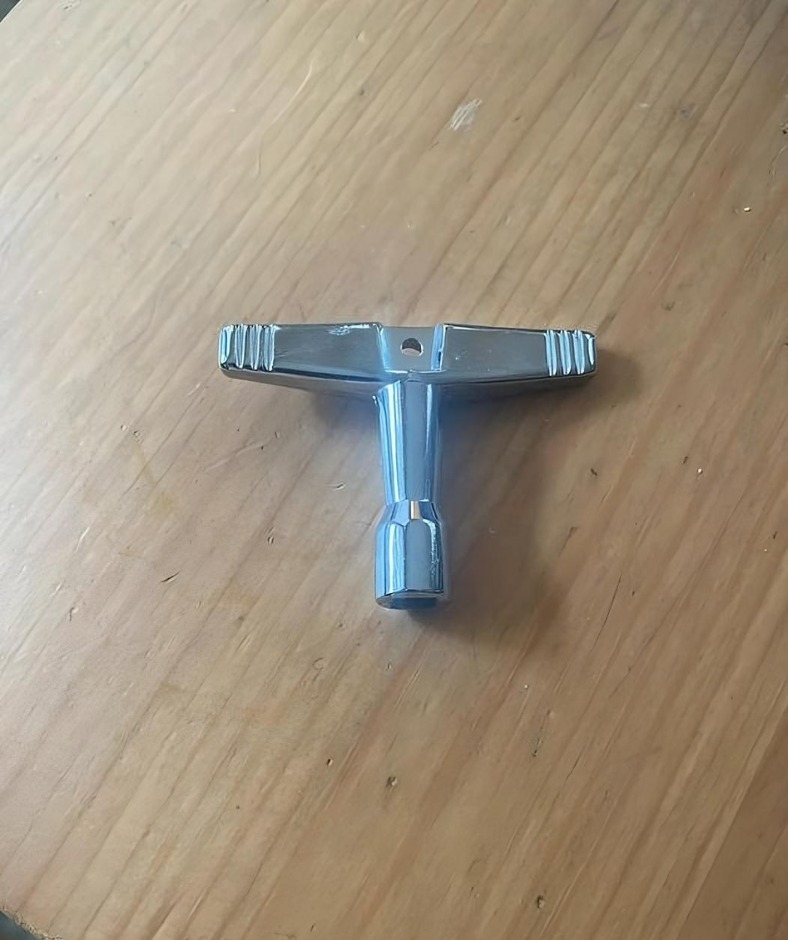The drum key, though compact and often overlooked, is an essential tool for every drummer. This small, T-shaped device is more than just a tuning tool—it represents centuries of innovation in musical instrument design. While it may seem simple, the drum key plays a vital role in shaping the sound of modern music. In this article, we’ll take a deep dive into the history, functions, and ongoing importance of the drum key in the world of percussion.

Ancient Beginnings: The Origins of the Drum Key
Drumming has been a part of human culture for thousands of years, with drums playing significant roles in ancient civilizations like Egypt, Mesopotamia, and China. In these early societies, drums were used in religious rituals, celebrations, and even communication. But even back then, drummers faced the challenge of tuning their instruments to create the desired sound.
In ancient times, drumheads were typically made from animal hides stretched over wooden frames. Drummers would adjust the tension of the drumhead by hand or with rudimentary tools. While these techniques were basic, they laid the foundation for the drum key we know today, helping drummers achieve more precise control over their instruments’ sound.
The Birth of the Modern Drum Key in the 19th Century
The drum key as we know it began to take shape in the 19th century, during a period of industrialization and technological progress. As advances in metallurgy and manufacturing techniques emerged, musicians sought better ways to improve their instruments, including drums.
The modern drum key was born from these innovations. It evolved into a T-shaped tool with a square or hexagonal socket that fits over tension rods, which secure the drumhead to the drum shell. This new design allowed drummers to quickly and easily tighten or loosen the drumhead, making it much easier to adjust tuning. As a result, the drum key became an indispensable part of every drummer’s kit.
Versatility of the Drum Key: More Than Just Tuning
While its primary function is tuning, the drum key offers many more uses than that. Its versatility makes it an essential tool for various adjustments, helping drummers fine-tune their instruments and maintain their setups.
- Tuning Drumheads
The main use of the drum key is tuning. By turning the key clockwise or counterclockwise, drummers adjust the tension of the drumhead via the tension rods. Tightening the rods raises the pitch, while loosening them lowers it. This simple mechanism allows drummers to customize their sound depending on their musical style. Jazz drummers may prefer higher, crisper tones, while rock drummers often opt for lower, punchier sounds. The drum key makes these adjustments quick and easy. - Replacing and Repairing Drumheads
Another critical function of the drum key is replacing worn or broken drumheads. When a drumhead wears out or breaks, the drum key is used to release the tension rods and remove the damaged head. This process not only simplifies drumhead changes but also allows for quick repairs, which can be crucial during live performances. - Adjusting Drum Hardware
Many drummers rely on their drum key for more than just drumhead tuning. Drum kits consist of various components, including snare drums, tom mounts, and kick pedals, many of which have screws and bolts compatible with the drum key. Whether it’s adjusting the height of a cymbal stand or tweaking the angle of a tom, the drum key helps drummers make necessary adjustments to their equipment quickly and efficiently.
Shaping Sound Across Genres
The drum key plays an essential role in shaping the sound of various musical genres. Whether it’s the crisp rhythms of jazz or the thunderous beats of rock, the drum key enables drummers to fine-tune their instruments to achieve the perfect sound.
- Jazz and Precision Tuning
In jazz, drummers often experiment with different tunings to create distinct tonal textures. The drum key allows jazz drummers to adjust their drumheads for a higher, more resonant tone, complementing the genre’s delicate brushwork and improvisational style. - Rock and Power
Rock music demands a heavy, powerful sound that cuts through the mix of guitars and bass. By using a drum key, rock drummers can quickly adjust their drumheads to produce the low, punchy tones that define the genre, ensuring their drums sound perfect during live performances. - Studio Recording and Sound Engineering
In the recording studio, the drum key is essential for achieving the perfect drum sound. Sound engineers often work with drummers to fine-tune the drumhead tension, adjusting it for the right balance of tone, sustain, and resonance. A well-tuned drum can make a big difference in the overall quality of a recording, enhancing clarity and depth in the final mix.
The Enduring Significance of the Drum Key
Despite advances in drum technology, the basic design of the drum key has remained largely unchanged for over a century. Its continued use speaks to its effectiveness and importance in the drumming world. Whether you’re a seasoned professional or just starting out, the drum key is an essential part of a drummer’s toolkit, helping them unlock the full potential of their instrument.
Conclusion: The Drum Key’s Lasting Legacy
From ancient beginnings to its modern role in music, the drum key has evolved into an indispensable tool for drummers worldwide. This small but mighty device has shaped the sounds of countless musical genres, allowing drummers to achieve precise tuning, replace drumheads quickly, and make adjustments to their setups. The drum key may appear simple, but its impact on the world of music is profound, ensuring that drummers can always deliver their best performance, both on stage and in the studio.





